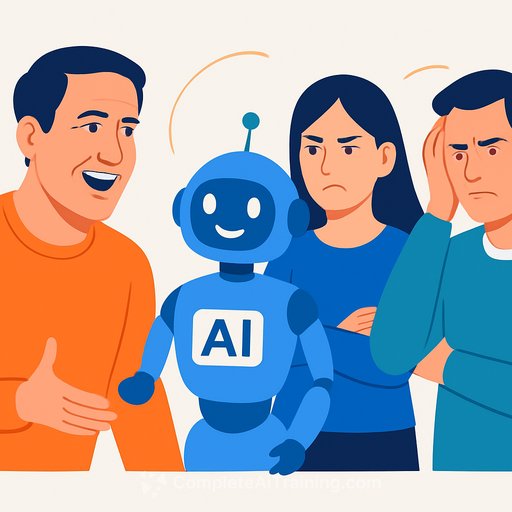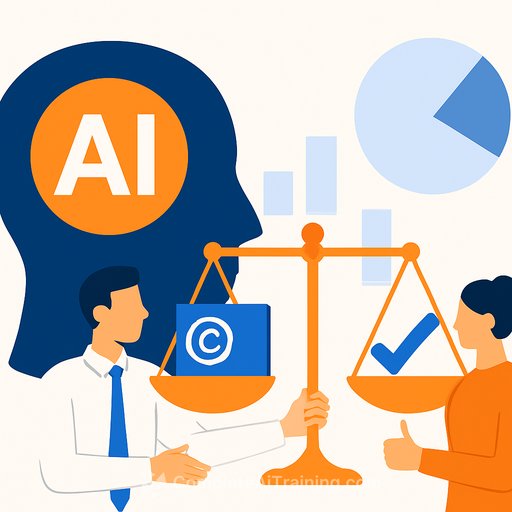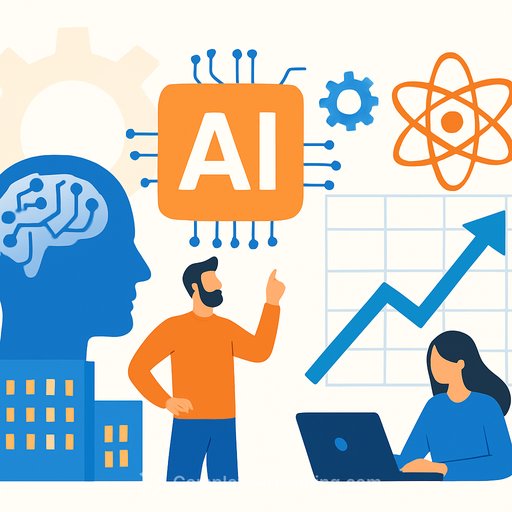AI ads are outscoring traditional work. Dismissing them now is a mistake
Fresh testing from System1 and Jellyfish shows AI-assisted video ads averaging 3.4 stars versus a 2.3-star average across 123,000 traditionally produced ads. Small sample (18 ads), yes. But the signal is clear: audiences care about how an ad makes them feel, not how it's made.
For creatives, that's the brief. Use the new tools to deliver bigger feelings on tighter timelines and budgets-without abandoning craft or truth.
What was tested
The set included 18 AI-assisted ads across US and UK markets: automotive, soft drinks, water, smartphones, news, kitchen appliances, ready meals, travel apps and more. Some were agency or AI production work, some were solo creators, and a few were "spec" films that went viral.
Note the bias: seven of the 18 came from Brandtech Group companies (Jellyfish, Gravity Road, Oliver). We're early in this wave, so the sample naturally skews toward teams already leaning in.
The numbers creatives actually need
- Effectiveness: AI-assisted ads averaged 3.4 System1 stars vs 2.3 across the full database.
- UK spike: UK-made AI ads averaged 4.6 vs a UK average of 2.6.
- Indistinguishable to many: 32% of viewers thought they looked like a typical pro ad; 33% said they had a distinctive style.
- Holiday proof: Coca-Cola's 2025 "Holidays are Coming" hit the maximum 5.9 stars. 71% of emotional response was "happiness" vs a 36% category average.
One line that keeps getting repeated-"AI ads are just slop"-doesn't match what people are actually feeling when they watch them.
Being "obviously AI" didn't hurt. It may have helped
The top half of ads that viewers recognized as AI scored 3.3 stars on average, compared with 2.3 for the bottom half. The likely reason: AI lets you build spectacle on normal budgets. People love spectacle when it fits the brand.
Example: A luxury travel spot hit 3.1 stars and scored 43% on "surprise" (US average is 15%). One viewer: "Amazing ad. How inspiring! Never seen anything like it." Bigger emotional range, formerly locked behind big-budget gates.
LLMs are a new audience. They don't react exactly like humans
All 18 ads were also tested in Jellyfish's Share of Model. Scores ranged 7-9/10. The ranking pattern matched System1's top/middle/bottom, with a correlation of 0.56 to human results-related, not identical.
A creative improver agent (Pencil) offered blunt notes on one ad: Attention 5/10, Branding 3/10, Clarity 4/10, Emotion 4/10, CTA 2/10. Translation: models can be useful critics, not cheerleaders. The next wave of research with INSEAD and System1 will dig into drivers of effectiveness for humans, models, and work that needs to perform for both.
Speed is real (and useful), but it's not the whole story
At a recent event, a brief was chosen at 10am and a full AI-produced campaign was presented six hours later. Speed matters, but the win is bigger: more options to test, more room to iterate, and the chance to spend your time on the concept instead of permissions and logistics.
Practical playbook for creative teams
- Start with a truth-led idea. AI doesn't fix weak strategy. It amplifies it-for better or worse.
- Lean into spectacle when it's on-brand. Use AI to build scale, wonder, and surprise. Earn the "wow," don't force it.
- Design for emotion first. System1's scoring is emotion-driven. Map which feelings you want to trigger and where.
- Brand early and often. Don't hide the logo until the end. LLM feedback flagged weak branding as a common failure.
- Clarity beats clever. Tighten the message. If a busy viewer bails at 3 seconds, they should still get it.
- Add a clear next step. Many AI pieces skip the CTA. Don't.
- Test both audiences. Human pretesting (e.g., System1) for emotion; LLM-based tools for structure, clarity, and consistency.
- Mind the details. Hands, faces, physics, continuity. Bad craft breaks trust fast.
- Budget where it matters. Put spend into concept, music, edit, and finishing. AI helps you reallocate.
- Build a repeatable pipeline. Prompts, references, style sheets, asset libraries, post workflows. Save and reuse.
- Stress test authenticity. If it looks synthetic, make it a feature of the concept (or dial it back).
- Iterate in public, but ship with standards. Fast drafts are fine; final output still needs rigor.
What this means for creatives
Effectiveness-not just efficiency-is on the table. AI-assisted ads are already beating averages, and UK teams in particular are posting standout scores. The advantage goes to creatives who can turn constraints into spectacle without losing the human thread.
Models aren't making great ads on their own. The work shines when skilled people direct the machine with taste, intent, and standards. The duo is where the magic is-idea-led, emotionally precise, executionally ambitious.
Bottom line
People don't care how you made the ad. They care how it makes them feel-and whether it helps them decide. Use AI to widen your canvas, move faster, and spend more of your time on the idea.
If you're leveling up your team's skills, here's a curated set of AI learning paths by role: Courses by job.
Your membership also unlocks:






